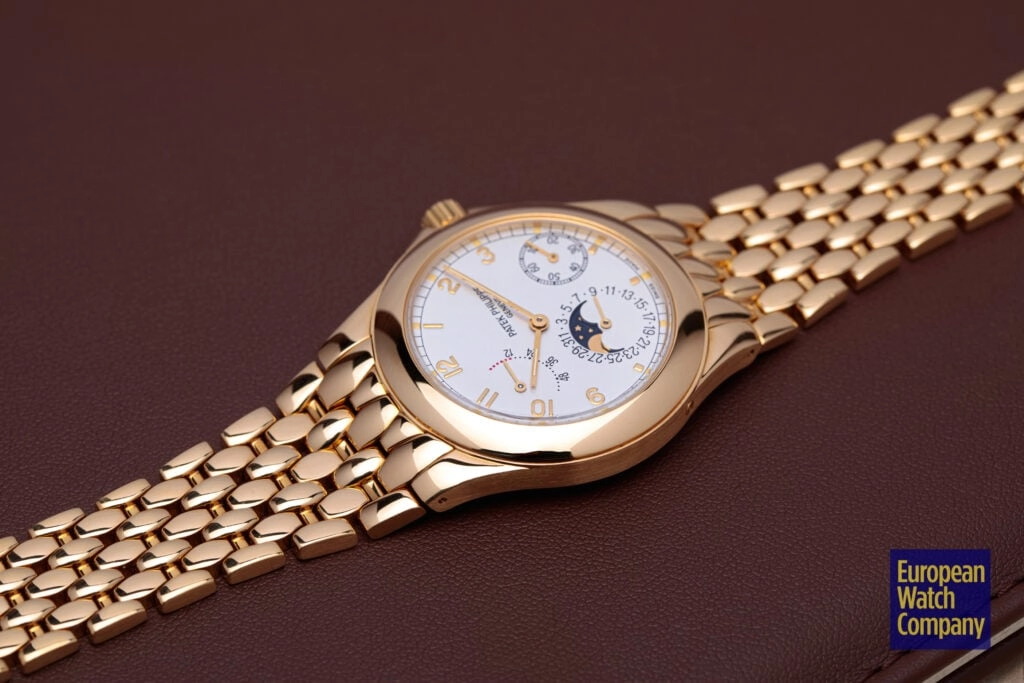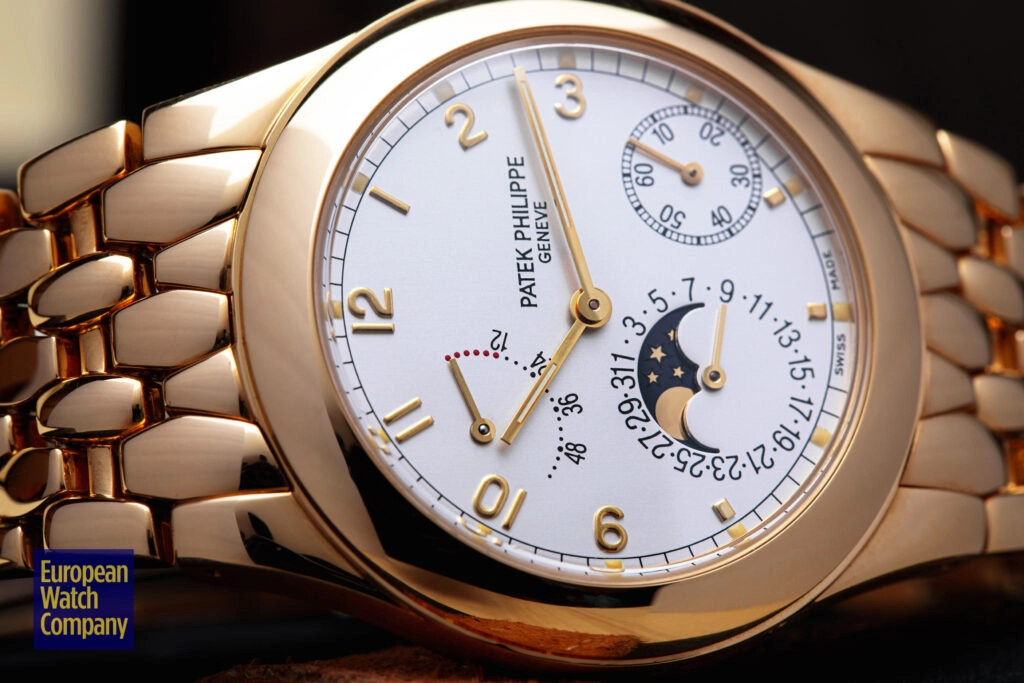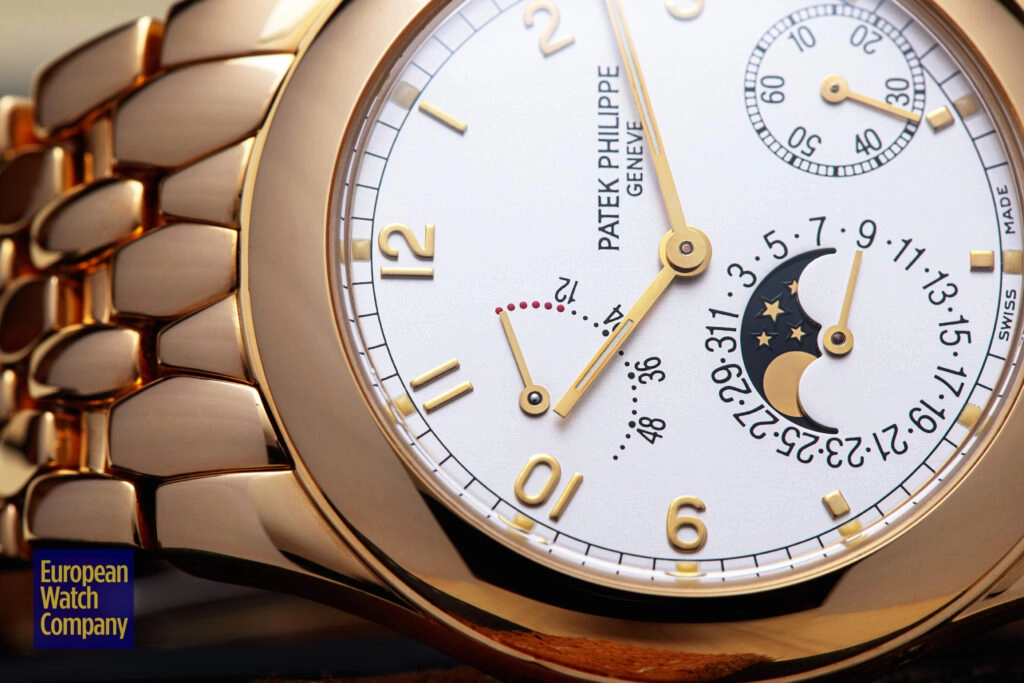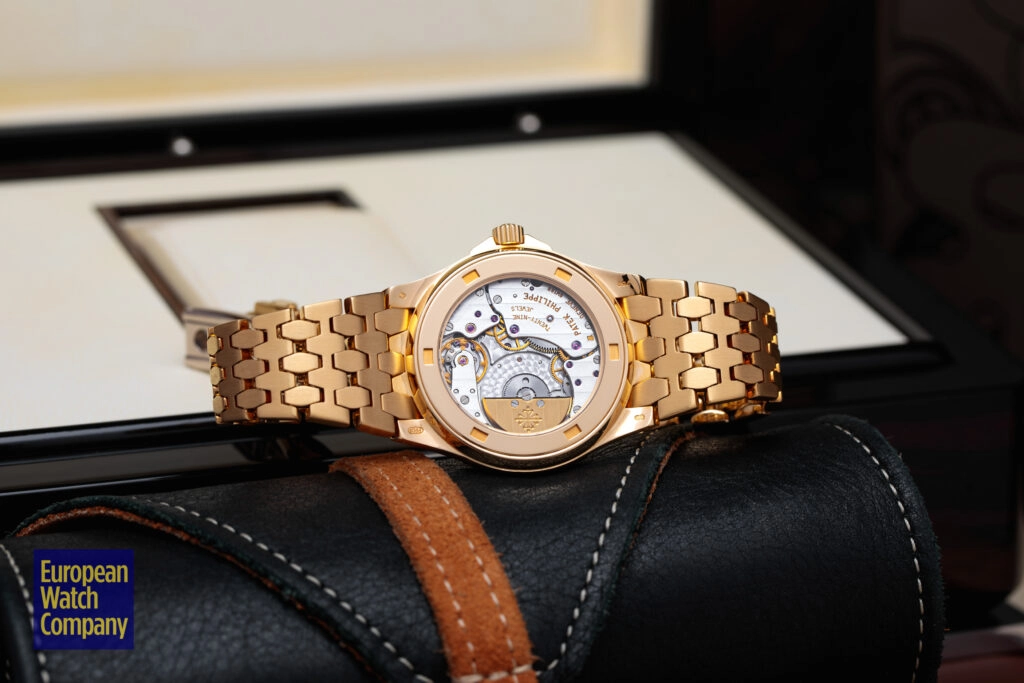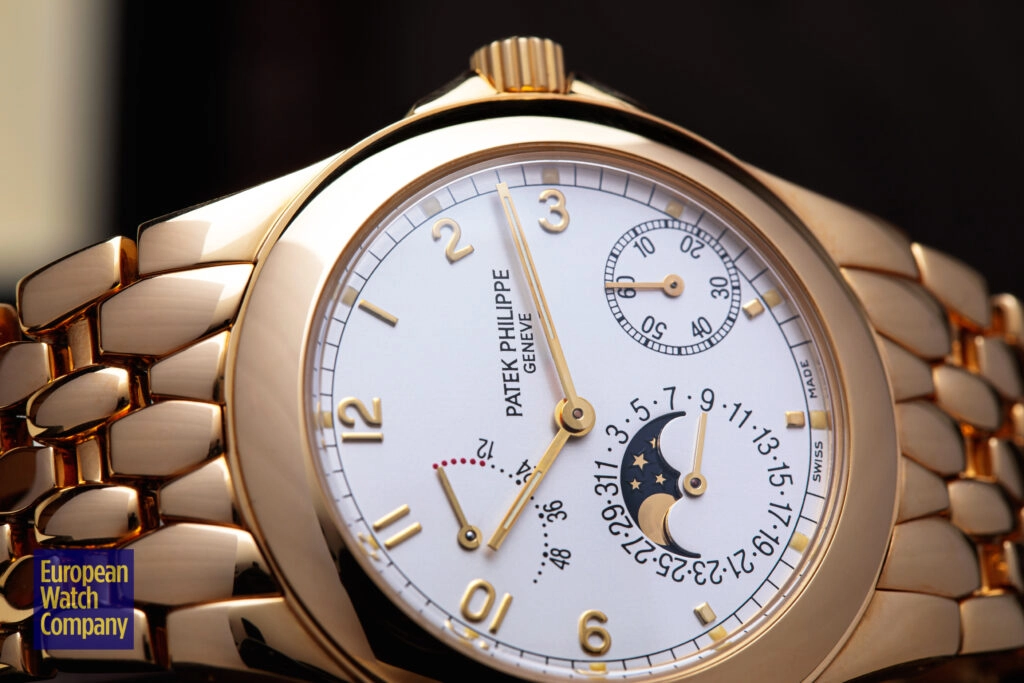Fly Me to the Moon: Patek Philippe 5085/1J Power Reserve Moon Phase
Patek Philippe
In the luxury watch world, some brands transcend the idea of what a “good” watch is, and live in their own category. Sometimes, those are very esoteric approaches to design, and do things so differently that they can’t simply be lumped with the other watches. Then you’ve got brands like Patek Philippe that have taken what they’re offering, polished — sometimes literally — every facet possible, and in turn creating timeless examples of very complicated watches. That is where we find ourselves with the Patek Philippe 5085/1J Power Reserve Moon Phase.
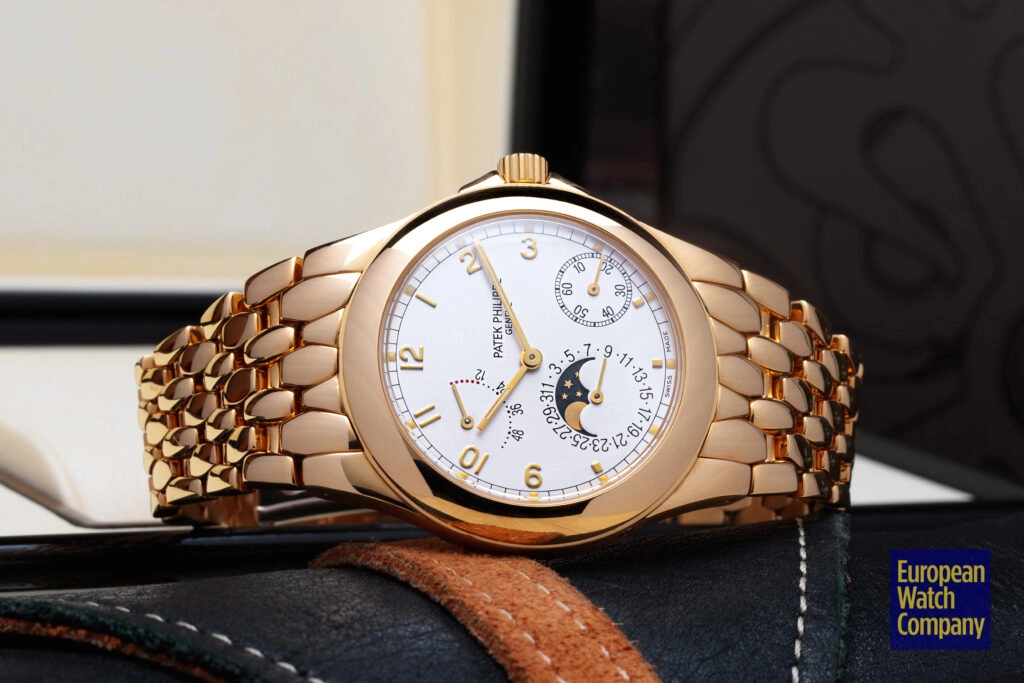
Patek Philippe 5085/1J Power Reserve Moon Phase
History
Many brands will claim to have a storied history, and a number actually do. With Patek Philippe, you don’t get hit over the head with their history. It takes some digging to get into, and the archeologist is well-rewarded. Even a quick bit of searching reveals that Patek Philippe created the first perpetual calendar wristwatch in 1925. Yes, there were pocket watches that accomplished this feat (and Patek bought one of the first — by Thomas Mudge — in 2016), but to package it in a wristwatch, 1925 is where we start.
Patek did not sit back on their laurels these past 97 years. No, they’ve constantly improved upon their craft, continually producing highly-complicated calendar movements. The one that we find here in the Patek Philippe 5085/1J is the 240 caliber, first introduced in 1977. Even though it is a relatively recent caliber, it still manages to have decades of refinement.

Patek Philippe 5085/1J Power Reserve Moon Phase
Design Details
Executed in yellow gold, this reference of the Patek Philippe 5085/1J Power Reserve Moon Phase looks very much the part of a luxury watch. The inclusion of a bracelet here is a relative rarity for Patek within their complicated watches, further bolstering its collectability. Rather than a beads-of-rice look, the links are shaped in such a way to make it feel more like something that is woven, instead of assembled.
On the dial, the Patek Philippe 5085/1J gives you a lot of information across a clean field. Surprisingly, Patek went with a more off-kilter dial layout, yet it still has its own sense of balance. For example, the signature on the dial. Rather than being centered under the 12, it’s left-aligned at the 12, and shifted down a bit closer to the handset than you might expect. By doing this, you’re given a very legible look at the retrograde power reserve indicator between the 10 and 11 o’clock marks.
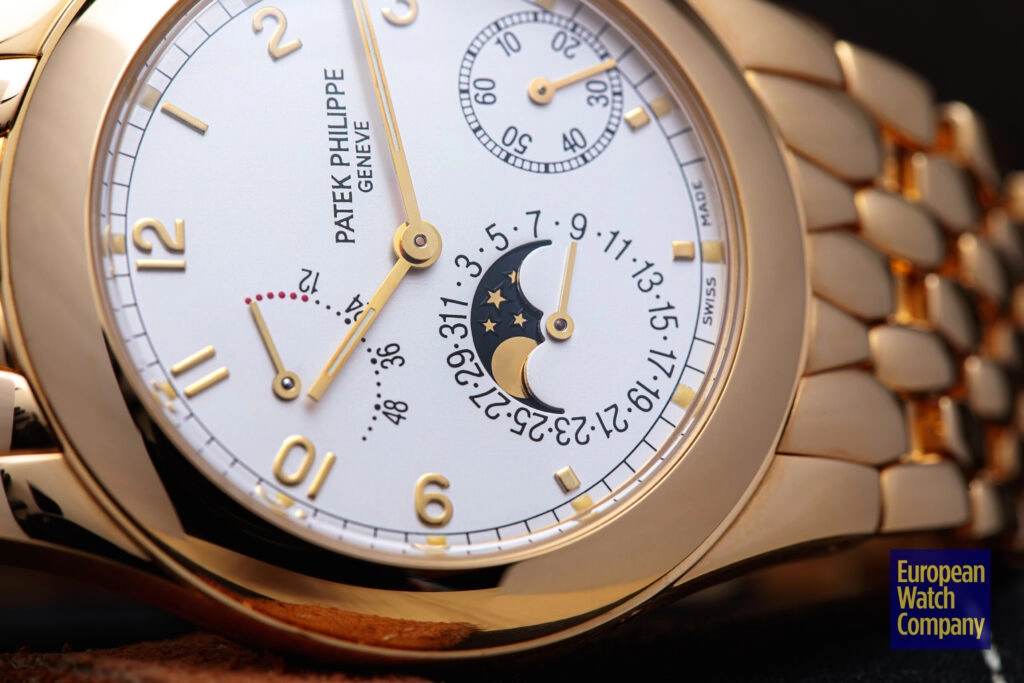
Patek Philippe 5085/1J Power Reserve Moon Phase
Both the moon phase and its surrounding pointer date complications occupy pride-of-place at 7 o’clock. On a dial, you want this to be generously sized, as you’re relying on a single small hand to clearly indicate the date of the month. A larger size also gives us a clearer look at the moon phase indication. Finally, just barely cutting into the minute track, you have the small-seconds indication. There is a sort of symmetry here, but it’s more implied, and you need to look along the diagonal axis to pick it up. A secondary symmetry is reinforced by the applied numeric indices on the upper half, simple lumed stick hands that are mimicked on the subdials, and the railroad track around the outer edge complete with its lumed pips.
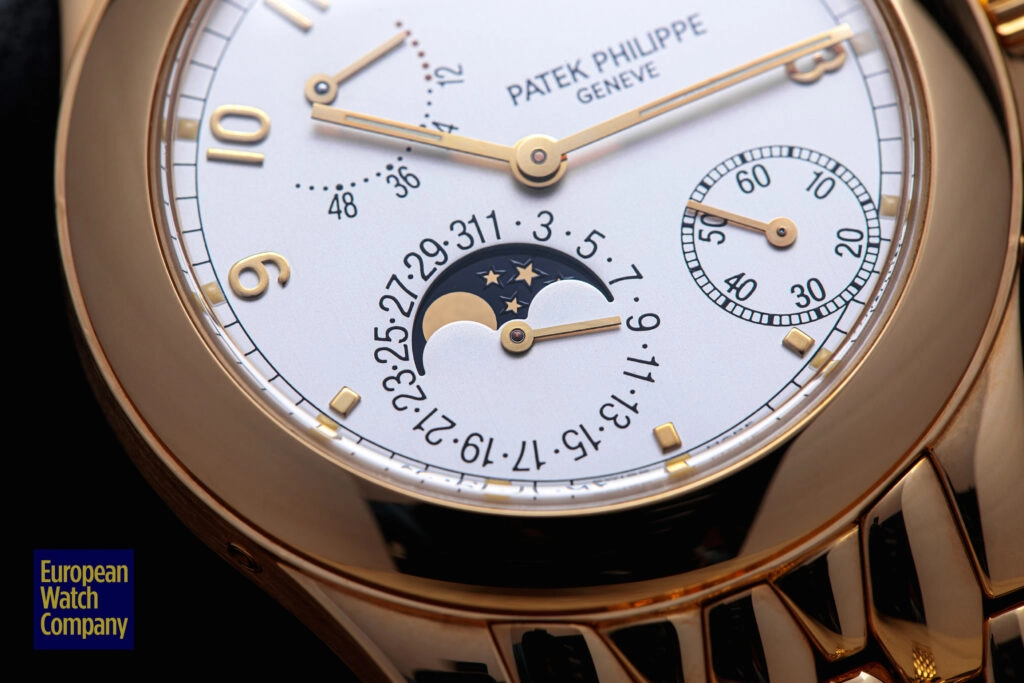
Patek Philippe 5085/1J Power Reserve Moon Phase
Inner Workings
As was mentioned above, the Patek Philippe 5085/1J Power Reserve Moon Phase relies on the 240 caliber — specifically the 240 PS. While we opened this story by talking about perpetual calendars, it must be noted that the 240 itself is not a perpetual calendar. This means that you’ll be needing to make small adjustments (via a recessed pusher at 8 o’clock) for those months with fewer than 31 days. That said, the 240 is an exquisitely executed caliber nonetheless. As a nice little bonus for this particular reference, an exhibition caseback allows for an unfettered view of its fine finishing when not being worn.

Patek Philippe 5085/1J Power Reserve Moon Phase
Through this slice of sapphire, you can see one of my very favorite parts of the 240 caliber: its micro-rotor. This is done in a 22K gold, echoing the gold of the case and bracelet. Why the micro-rotor, you may ask? It allows the maker the ability to craft a much thinner movement, without resorting to manual winding. Past the practical, it’s still a bit less common in the luxury watch space, so there’s a bit of added rarity that comes with it.

Patek Philippe 5085/1J Power Reserve Moon Phase
The compact movement allows the case to come in at 9.5mm, while still offering a healthy 48-hour power reserve. The more reserve the better, particularly when you’re dealing with calendars and moon phase complications, as resetting those after a mainspring runs down is rarely a pleasant task. The caliber 240 relies on 29 jewels to keep things pivoting smoothly. Additionally, it has a shock-absorbing mechanism, free-sprung balance, straight-line lever escapement, and a flat balance spring.

Patek Philippe 5085/1J Power Reserve Moon Phase
Versus The Competition
Some of the strongest competition for the Patek Philippe 5085/1J Power Reserve Moon Phase actually exists within the Patek Philippe catalog. Given their long history of complicated calendar movements, this should not be a surprise. Something like the Patek Philippe 5960/1A gives you that complication, but in a steel sports watch format.
Outside of Patek Philippe, there are some pretty fair contenders out there, including the A. Lange & Söhne Saxonia Moon Phase, or even the Breguet 3300 Classique Moonphase in yellow gold for a lower price of entry. However, if you’re looking for that warm gleam of gold in a design that walks the fine line between classic and dated, there would be none other than the Cartier Pasha Perpetual Calendar Moonphase. While this is a design from the late 1990s (rather than the 2000s) I see a lot of similarities between these two examples, each with their own unique design quirks.

Patek Philippe 5085/1J Power Reserve Moon Phase
Personality
The Patek Philippe 5085/1J Power Reserve Moon Phase is a design that may feel dated to some, but the closer you look, the more you realize how thoughtful and oddly timeless some of its design elements are. Either way, it’s certainly quite different from most watches you’ll see on someone else’s wrist. Once you get past all of the yellow gold, you realize that this is a marvelous and fantastically executed movement — one that relies on an organized yet unorthodox dial design. A subtle quirkiness, if you will.

Patek Philippe 5085/1J Power Reserve Moon Phase
Final Thoughts
While yellow gold isn’t one of my go-to metals, I have a hard time denying the appeal of the Patek Philippe 5085/1J Power Reserve Moon Phase. The technical chops are there, and the fact that this reference includes both a bracelet (rather than a strap) and an exhibition caseback (instead of a signed solid caseback) elevates the reference into not just a curiosity but a rarity. One that — hopefully — the next generation will appreciate as much as you do.








